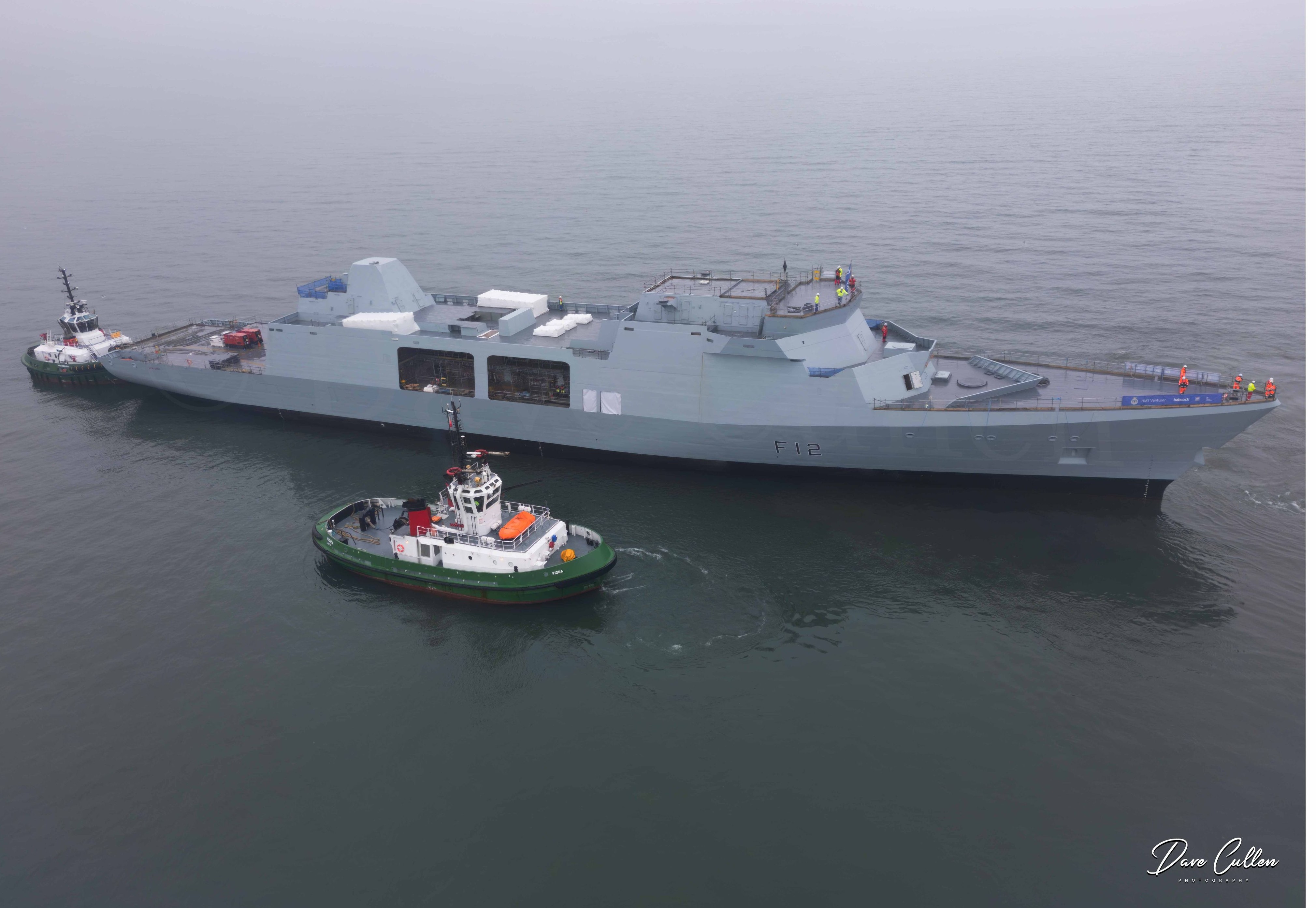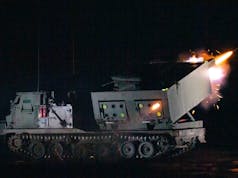The National Audit Office (NAO) has reported that the Ministry of Defence’s (MOD) Equipment Plan for 2023 to 2033 is significantly underfunded, facing the largest budget deficit since its inception in 2012.
The shortfall of £16.9 billion was highlighted in the report titled ‘The Equipment Plan 2023–2033’.
As of March this year, the forecasted costs stood at a staggering £305.5 billion, surpassing the budget of £288.6 billion. This marks a stark contrast to last year’s Plan, which had forecast costs £2.6 billion below the available budget. The report pinpoints the root of unaffordability to a 27% increase in forecast costs, amounting to £65.7 billion, which significantly overshadows the 19% budget increase of £46.3 billion. Nuclear and naval programmes are the primary drivers of this increase, with costs soaring by £54.6 billion.
A significant contributor to the financial strain is the MOD’s prioritisation of delivering the replacement nuclear deterrent on schedule, leading to a 62% cost hike at the Defence Nuclear Organisation (DNO) by £38.2 billion. Similarly, the Navy’s forecast costs have escalated by £16.4 billion, a 41% jump from the previous Plan. The NAO identified inflation as a key factor in the Plan’s increased costs. However, the MOD has not received additional funding to counteract these inflationary pressures. Consequently, the Top Level Budgets (TLBs) must absorb the impact within their existing budgets. Inflation is expected to contribute £10.9 billion to the Plan’s cost increases.
Despite these challenges, the MOD is not planning immediate program cancellations. Instead, it aims to use an additional £1.95 billion provided in the 2023 Spring Budget to mitigate its funding shortfall for 2023-24 and 2024-25. Nevertheless, the MOD acknowledges that the Plan’s funding gap could range from £7.6 billion to £29.8 billion, depending on the materialisation of risks or opportunities. The report also highlights a discrepancy in how the TLBs prepare their forecasts, leading to an underestimation of the full funding gap between government objectives and the budget available. This inconsistency fails to reflect all cost pressures for developing new and supporting existing capabilities outlined in the 2021 Integrated Review and the Defence Command Papers.
Gareth Davies, the head of the NAO, expressed grave concerns over the unaffordability of the Equipment Plan in the report, which can be found here.
“The MOD acknowledges that its Equipment Plan for 2023–2033 is unaffordable, with forecast costs exceeding its current budget by almost £17 billion. This is a marked deterioration in the financial position since the previous Plan. Deferring choices on spending priorities until after the Spending Review, while understandable given the government’s ambitions expressed in the updated Integrated Review, risks poor value for money if programmes continue which are later cancelled, scaled down or deferred because they are unaffordable.
The MOD should consider how future Plans can achieve their core purpose: providing a reliable assessment of the affordability of its equipment programme and demonstrating to Parliament how it will manage its funding to deliver equipment projects.”
Brief summary of projects either not Included or partly included in the Equipment Plan
The National Audit Office report on the Ministry of Defence’s Equipment Plan 2023-2033 reveals several critical capability requirements that are partly or fully excluded from this year’s plan. These exclusions, despite being integral to the UK’s defence strategy, have no funding allocated in the equipment plan.
Programmes Not Included in the Plan:
1. Land Environment Capability Assessment Register (British Army):
- Unfunded Gaps: Significant gaps in lethality, air defence, C4I systems, logistics, CBRN, and mobility.
- Internal Balancing: The Army is conducting an internal exercise to modernise forces within existing funding.
2. Warrior Armoured Vehicle and Challenger 2 Main Battle Tank (British Army):
- Costing Uncertainty: Extensions for Warrior and Challenger 2 are still being costed, potentially leading to unfunded pressures.
3. Land Precision Strike (Strategic Programmes Directorate):
- Requirement: A need for a ground-launched precision guided weapon with at least 80km range.
- Funding Status: Programmed for the end of the decade, but no financial commitment yet.
4. SPEAR Cap 3 Electronic Warfare Air-to-Ground Missile (Strategic Programmes Directorate):
- Programme Status: Initial low-cost capability demonstrator under negotiation; full programme confirmation pending by the RAF.
5. Meteor Air-to-Air Missile (Strategic Programmes Directorate):
- Mid-Life Upgrade: Funding of up to £2 billion required for mid-life upgrade, currently not included.
6. Test and Evaluation Contracts (Strategic Programmes Directorate):
- Funding Shortfall: Insufficient funding to replace two contracts ending in 2028; development and procurement funding gap exists.
Partly Funded Programmes Included in the Equipment Plan
1. A400M Transport Aircraft Additional Purchases (Royal Air Force):
- Funding Status: Some funding held centrally; sufficient but does not align with later years’ spending needs.
2. F35-B Combat Aircraft Third Front-Line Squadron (Royal Air Force):
- Capital Budget Shortfall: Increases by £0.1 billion between 2023-24 and 2026-27.
- Operational Funding Gap: Lacks £0.4 billion needed to operate the squadron.
3. New Entries into the Shipbuilding Pipeline (Royal Navy):
- Projects Included: Multi-Role Ocean Surveillance ships, Type 32 Frigates, Multi-Role Support Ships, Type 83 destroyers, Future Air Dominance System.
- Financial Shortfall: Costs are £5.9 billion higher than current budgets.
4. In-Service Extension of RFA Argus (Royal Navy):
- Implementation: Extension of the primary casualty receiving ship is underway.
- Budget Issue: No additional budget was received for this extension.
5. Mine Hunting Capability (Royal Navy):
- Plan Inclusion: Second phase included in the Plan.
- Funding Shortfall: No additional budget for this phase; additional funds sought for Hunt Class vessels until new capability is operational.
6. Future Commando (Royal Navy):
- Modernisation Funding: £0.7 billion required for Royal Marines modernisation to enable operations from the sea in high-threat environments.
- Budget Exclusion: This funding has not been included in the Plan.
7. Directed Energy Weapons (Strategic Programmes Directorate):
- Status: Novel capability with assessment phase funding.
- Review Pending: MOD to review at the end of the assessment phase; may replace or supplement other capabilities.













Again!!
Inflation aside Either the budget isn’t high enough or shows how our strategic nuclear deterent is impacting on our standard force capabilities.
As its a strategic deterrent again I state its procurment & maintenance costs should never have been bought under the same umberella as our conventional forces budgets.
Really, what difference would it make? The deterrent still has to be funded and ring fencing it wouldn’t alleviate the overall problem of government overspending and continued deficits ( every year since 2000).
I haven’t read the latest report in detail but its conclusion does show a big change from the previous report which, partly as a result of the £16b budget injection, revealed no black hole.
However, a projected £17b shortfall over 10 years is not unmanageable.
The difference is the Treasury had to pay for it directly, and they always manage to magic money when pressed. Putting the strategic deterrent into the Defence budget really messed up budgeting.
True. We found £376bn to pay for the Covid-19 response over just 2 years. (Of course HMG borrowed the money, as we do for everything beyond our means).
Nuclear is really expensive. The SSNs are worth the money.
The SSBNs I’m not so sure. If it wasn’t coming from the defence budget then fine. It will never be used and is more a diplomatic tool than a defence item.
SSBNs are the most important part of Britain’s defence. It’s the thing that prevents people like Russia moving out of “grey zone” actions like undersea pipes etc. If Europe had no nuclear deterrent Russia would have invaded long ago.
Inflation aside (which of course is pertinent at this time) I again pose the question:
Should the stragetic Nuclear deterent costs come under the Conventional forces budget.
The only half-meaningful figure would be what % of GDP, amortised over relevant periods, was represented. We’ll need more funding regardless, and are supposedly due to increase from the paltrey around 2% currently quoted due to obviously increasing instability. That’ll need to be long before we’re required to instigate Government Emergency Powers at final Shit-Fan point.
Groundhog day.
We have had this since 2010 and before. Back then there was billions unallocated as “headroom”
The capital costs of the nuclear deterrent should not be included.
Only skimmed the report but it seems clear that the lurch back into projected shortfall is largely a result of a change in the costs included in the forecast. Even though not ordered, equipment in the RN total includes the full estimated cost of MRSS, Type 83, Type 32,further MROS.
The other big increase is the DNE, where it seems costs are being brought forward into the 10 year review period so delivery is sooner rather than later.
In contrast, the army is only including costs for authorized programmes, NOT what it judges it might need to meet the aims of the latest integrated review.
This big inconsistency in approach may have arisen because the MOD hasn’t produced a complete overall 2023 plan.
This ‘shortfall’ needs to be addressed now, otherwise it will continue continue to grow exponentially each year. Simple elementary economics really.
Next year Labour will get in, however so much damage has been done to the countries finances, that 5 years of power, will not be enough time to fix many of those ill’s.
Yet another example if it were needed, where capitalism simply does not work. The constant ‘subbing out’ of services, has damaged the MOD and cost it, and the UK taxpayer 100’s of millions.
Is there any way £17bn can be found to fund the projects?
Of course. That’s £17bn over ten years. An extra £2bn per annum on defence spending would give room to spare over the equipment hole. Given a £2.5tr GDP, that would be four fifths of a tenth of a percent of GDP. If Defence spend is now 2.2%, it would have to increase to 2.28%. Not that even an extra £2bn a year would be enough for the whole issue.
However, if the government decided that the time was right to spend £2.5% of GDP on defence as it promised, the current black hole would disappear. 3%, as the Defence Secretary and Chancellor have both called for, and we can start to restore the country’s defences somewhat.
Ou GDP is actually around the 3.2 trilllion mark according to most sources
As i’ll put on all the NAO report related posts today the sheer number of unfunded or partially funded projects shows (if more proof were needed) just how poorly managed defence procurement is.
There’s always a case to be made for more money…..but first and foremost we need to get good value out of the not insubstantial budget (£55 billion per annum) we have.
Everything contracted out, waste and skimming off the top abundant, duplication and overlap of capabilities, little competition and over reliance on US kit in many areas, a still overly bloated defence estate, politicians writing cheques the services can’t cash and the services themselves trying to do everything with increasingly threadbare/hollowed out resources etc etc etc.
Not particularly hard to identify the problems, a lot harder to do anything about fixing them without grown ups in charge williging to do the hard graft.
Great points. So much waste and poor decision-making as regards equipment. Orbats being changed frequently, especially army. Ships undergoing lengthy refits, then being mothballed or sold after just a few more years. Poor value PFI contracts. Programmes being slipped/extended which costs much more money overall. Too much reluctance to buy developed kit ‘off the shelf’. UK-built kit having too little export potential.
I agree your US point – as well as being subject to always worsening exchange rate, we do not always get the kit quickly (despite being one of a few Tier 1 partners for F-35, deliveries have been glacially slow (although I recognise we get v4 software by delaying delivery) and there is often ITAR issues.
Having read a lot of the comments, I don’t think everyone has understood the basis of the NAO report. The projected shortfall at @ 5% of the 10 year plan for equipment acquisition and support now arises in large part from the inclusion of projects that have not yet been committed to. This is very different from the shortfalls in earlier reports that arose from committed projects. The situation is not nearly as dire as the headline suggests. Moreover, if the RN is struggling to crew existing ships, does it make sense to include costs of a yet to be designed additional 5 T32 frigates, for example.
If any work at all is to be done on the T32 project, even Concept work, in 2023-2033, then it should be in the Equipment Plan.
Manpower issues are outside the Equipment Plan.
Total blame the government on military spending but we send challenger 2 tanks to Ukraine but we haven’t enough for our defence
Interesting that much of this situation is due to ‘delivering the replacement nuclear deterrent on schedule, leading to a 62% cost hike at the Defence Nuclear Organisation (DNO) by £38.2 billion.’
I wonder how speeding up that programme has increased costs by a staggering £38.2 billion. Some explanation is required.
Why did it need speeding up? If it had been planned properly it would have been initiated at the right time.
Usually additional costs are incurred by slowing down a programme (!), as happened with the carrier project.